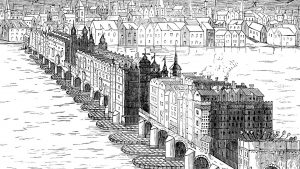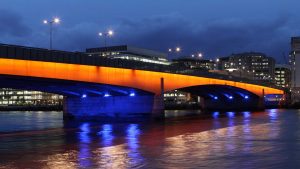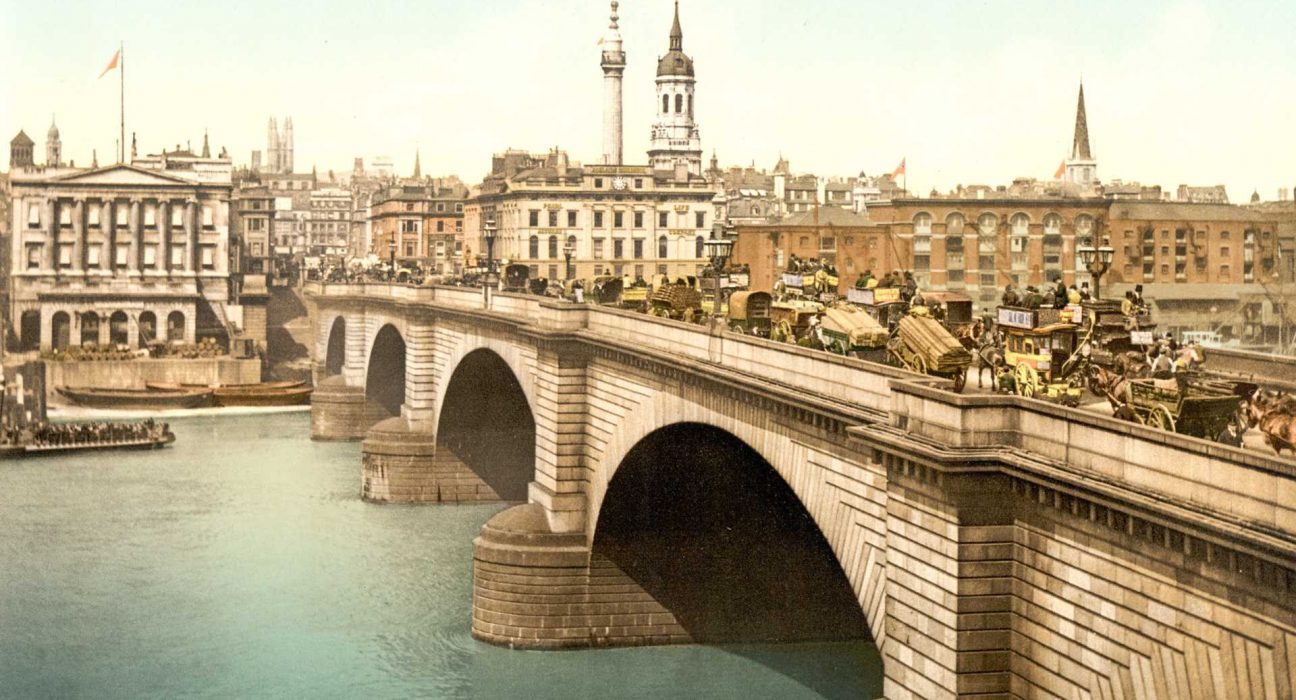London Bridge, a bridge over the river Thames in London, England. It has several important connections to British history. All of these connections come together to tell a real story that has been passed on through oral tradition. That’s why it is so important to know London Bridge’s history before you start planning your next vacation in Britain.
Who Built the Old London Bridge?

Peter of Cholechurch (1176-1209) was an English architect who is credited with designing and building the first London Bridge. The bridge, which originally consisted of just two arches, was constructed over the River Thames in 1176. Over the years, it has been modified numerous times, most notably in 1209 when a third arch was added. Peter of Cholechurch died shortly after its construction, but his design remains one of the oldest examples of Medieval architecture in England.
London Bridge History

London Bridge is not the bridge you’re probably thinking of. The Tower Bridge is actually a really, really beautiful bridge. It’s low-lying and all sleek towers are found on it, but there was a bridge on the site a very long time ago. Just as with London and Paris, a lot of these historic bridges were destroyed but rebuilt over the years.
There is much shallower water here on the Thames so it was natural for the Romans to build a bridge here in order to consolidate their city, Londinium, which became London. As London declined and people moved on, migration took place between the Anglo-Saxon regions of Mercia and Wessex.
In the 12th century, a bridge spanning the river Thames was built. It took 33 years and more money than £10,000 to construct, and over time it had a chapel dedicated to Thomas Beckett, the Archbishop of Canterbury, placed in the center. At that time it became London’s fourth bridge. Initially, there would have been a drawbridge that would allow ships to pass without having to dock. The early construction phases saw many fires on the bridge – by the 17th century, there were nine major fires! This led to the famous nursery rhyme: “London Bridge is Falling Down.”
Contributor Notes:
By the 16th century, the span’s structures were seven stories tall, and crossing it could still take a half hour in worst-case scenarios. Traffic was chaotic, and the bridge drew its share of unsavory characters. On each end of the span would rest prisoners’ heads on pikes.
The great King William IV made the decision to take down an ancient, old bridge when the Thames flooded in 1896 and designed the current one. It was opened in 1831 but thirty years later became overcrowded with about 8,000 pedestrians using it per hour. Thirty years after that it started to sink.
Today’s London Bridge has been rebuilt from the design of its 1948 predecessor, the one that was sold for $2.4 million dollars after purchasing it from an American in 1968. Queen Elizabeth II officially opened the bridge at the end of 1983 before celebrating its 450th anniversary.
Amazing Facts about London Bridge

Tower Bridge, London Bridge, and the city of London aren’t one in the same thing. They are different things that have similar names with significant differences.
As many as 50 designs were submitted for the London Bridge project before the winning design was selected.
The average weight of the London Bridge is over 11,000 tons of steel. To build such an enormous structure, over 70,000 tons of cement was needed to support the design.
Despite the evidence, London Bridge used to be significantly less bright.
In 1977, London Bridge was painted red, white, and blue in celebration of Queen Elizabeth II’s Silver Jubilee.
Over 432 laborers took eight years to construct London Bridge.
London Bridge is used by more than 40,000 people each day.
The History Behind London Bridge Falling Down

In 1844, a Viking raiding party arrived in London, England, and began a series of attacks on the city. The Vikings were revengeful after being chased out of Scandinavia by the Celts, who had more power at the time.
The Vikings besieged the Tower of London and other nearby settlements for three days before finally being defeated. One hundred and thirty-seven people were killed in the battle, including fifteen Britons and eleven Vikings.
The Tower of London was badly damaged during the attack, with part of its roof caved in and its walls heavily damaged. The Great Gatehouse was also destroyed, requiring rebuilding over a period of many years.
Conclusion
London Bridge is one of the most iconic bridges in the world, and its history is a story that spans centuries. From its beginnings as a simple wooden bridge over the River Thames, London Bridge has undergone many transformations over the years. Today, London Bridge is a heavily trafficked crossing point that connects two important parts of the city. If you’re looking to learn more about London Bridge’s fascinating history, be sure this article will help you.









Leave feedback about this